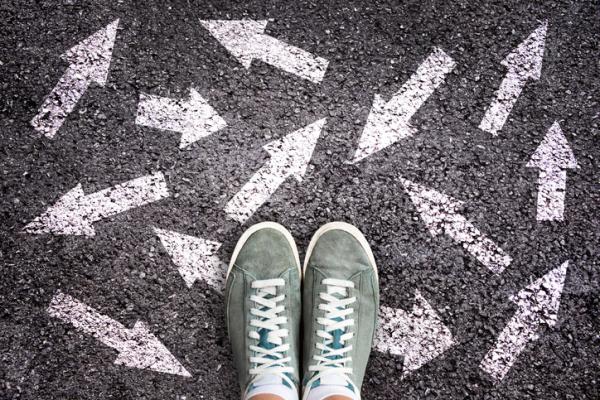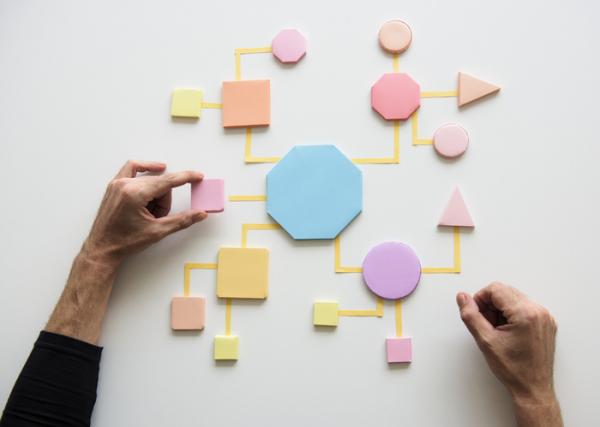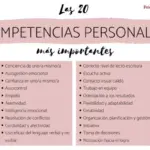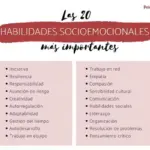
Self-regulation is one of the personal skills that allows us to set goals and move towards them. Therefore, it is a self-directed process. Likewise, it is a capacity that is vital for adaptation to the environment and an adequate personal and social adjustment. If you want to know more about this skill and how to improve it, keep reading this PsychologyFor article: Self-regulation: what it is, examples and exercises.
What is self-regulation
What does self-regulation mean? Self-regulation is essential to adapt to situations and to act according to our objectives. Next we will see in depth what self-regulation is.
Meaning of self-regulation
The concept of self-regulation is defined as the ability to control and manage thoughts, emotions, actions as motivation through a series of personal strategies that allow both the achievement of objectives and the avoidance of unwanted results. Likewise, the self-regulatory ability allows the analysis of the environment, giving a response to it and modulating this reaction in order to promote adaptation to the environment. This ability has great implications for a person’s personal development, social adjustment, and general well-being.
Instead, the self-regulation difficulties They are predictors of problems in interpersonal relationships and are a risk factor for substance abuse, emotional disorders such as depression and anxiety, as well as the development of impulsive or aggressive behaviors. The concept of self-regulation is complex, as it encompasses a series of processes and includes numerous executive functions.
Phases of self-regulation
Regarding the processes or phases of self-regulation, the following are identified:
- Planning phase: phase in which an analysis of the situation occurs, an establishment of objectives and an organization and programming based on these, as well as a connection with previous learning.
- Execution phase: that in which the behavior is put into practice or executed.
- Self-reflection phase: evaluation and assessment of the results obtained. This phase is of great importance because self-regulation is fed back based on the experiences and consequences derived from them.
Components of self-regulation
Within these phases, a series of elements or skills interact that play a role in self-regulation:
- Metacognition: awareness and ability to reflect on one’s own thinking.
- Self-knowledge: recognition of one’s own person, of his or her qualities, strengths and weaknesses. It is linked to the capacity for introspection.
- Self-control: Self-control is the ability to maintain the focus and direction of action.
- Self-monitoring: observation and supervision of one’s own behavior.
- Self-efficacy: confidence in one’s own abilities to achieve the proposed goals.
- Self motivation: own drive to persevere in what one intends to achieve, maintaining optimism and enthusiasm for it autonomously.
- Mental flexibility: ability to adapt behavior to changing environmental conditions.
- Behavioral inhibition: ability to stop the behavior and replace it with another more appropriate one.
- Self appraisal: ability to value and judge one’s own performance and learn from it.

Self-regulation examples
Below is a series of examples that demonstrate self-regulatory capacity:
- Example of self-regulation of behavior A person who thinks they should take better care of their health in general and wants to adopt healthier habits, so they decide to join a gym, plan their meals weekly, not leave unhealthy foods in sight, and gradually reduce alcohol consumption. and tobacco.
- Example of self-regulation of learning A student who is aware that the subject of mathematics is more difficult and costly than the rest of the subjects, and therefore decides to dedicate more study time to it, review each class lesson at the end, seek reinforcement or help with mathematics, and Give yourself a small reward with each exam you pass.
- Example of emotional self-regulation A person is not having a very good day and is aware of it. That day a friend tells him a joke, and internally it makes him angry. However, this person knows that he is having a bad day and that is why the joke affected him more, as well as that his friend did it with good intentions. Therefore, he decides not to show an angry reaction and chooses to tell his friend that he is not feeling very well today and would prefer that she not make jokes with him. In the following article you will find more information about emotional self-regulation.

Self-regulation exercises, strategies and activities
Self-regulation is a vital process present in various spheres or areas of our life. This competence is basic in the regulation of behavior and conduct in general terms, so its development is crucial for adaptation to the context. Given the importance of this psychological process, a series of steps are explained below. exercises, strategies and activities for self-regulation training:
- Self-awareness: A basic element in the self-regulation process is knowledge about our own person, characteristics, strengths and weaknesses. To do this, it is advisable to analyze the different spheres of our lives, evaluate what we would improve or should learn and what elements we already consider to be good. It is also advisable to make a description of ourselves as detailed as possible, and then be able to contrast it with close people.
- Planning: In terms of making plans, one strategy is to subdivide goals into smaller objectives. This clarifies the steps to follow, allows us to evaluate the achievement of these subgoals, as well as favors obtaining a greater number of small reinforcements or self-reinforcements, that is, positive evaluations of oneself, which in turn increase the motivation. Planning is an essential function for both the initiation and maintenance of behavior.
- Problem solving training: The problem solving technique consists of finding a solution in a planned way. First, the person identifies the problem and orients himself toward it, analyzing how he perceives it, what degree of control he has over it, and how much time he dedicates to it. Subsequently, the issue is clearly defined, the personal importance of the problem is formulated and evaluated, and what is intended to be achieved through its resolution. Next, a series of alternatives are generated and their consequences are assessed, to choose the one that we consider most appropriate. Finally, planning is carried out, it is implemented, and the operation of the chosen solution is verified throughout the process, making adjustments if necessary.
- Delay of gratification: delay of gratification is the ability to delay immediate reward and maintain behavior over the long term; It involves resisting and giving up temptations. To achieve this, the management of attentional resources through the stimulus control technique is effective, by which those elements that hinder the achievement of objectives and the maintenance of long-term behavior are identified, and exposure to them is avoided.
- Self-instructions: Self-instruction training consists of the person giving himself or herself orders internally to regulate his or her behavior. Self-instructions range from self-interrogation (That I have to do?, What is the next step?), self check (I will go over all the steps either I will check this point because I think it is not correct) to self-reinforcement (I’m doing very well either I have managed to go two hours straight without stopping). This technique is useful in introducing and automating various procedures and habits.
- Modeling: It can be helpful for the acquisition and maintenance of a behavior to imitate and learn from another person who is an expert or has more experience in the behavior we want to incorporate. The model person can be close or live, or through audiovisual or written support. To do this, it is necessary to choose the person who will be our model, to be able to observe and pay attention to their behaviors with the aim of retaining them in memory and reproducing them. Finally, the repertoire of behaviors is imitated and put into practice until acquired.
- Breathing and relaxation training: With these two techniques, both reflection and metacognition, or awareness about one’s own thinking, are promoted. Therefore, its practice can be beneficial for greater development of self-regulation, as well as reserving time for oneself.
- Change of beliefs: identification of those beliefs or thoughts that are limiting in what we propose and written record of them. Once on paper, a more positive, adaptive and constructive idea or cognition that can replace it is written next to it.
- Display: The visualization technique that uses imagination promotes self-motivation. To do this, the person visualizes in his mind the objectives that he intends to achieve and the positive consequences derived from it. Thus, there is an increase in optimism and an improvement in mood.
- Change of activity: Another self-regulation exercise consists of paying attention to the emotions and feelings that arise from the tasks you perform, as well as cultivating flexibility; So we discover that an activity is harmful, we are able to try new options or variations that are more beneficial.
- Go to a professional person: Remember that someone professional can facilitate your training and focus on self-regulation or those elements of this process that require more work or are more expensive for you.
This article is merely informative, at PsychologyFor we do not have the power to make a diagnosis or recommend a treatment. We invite you to go to a psychologist to treat your particular case.
If you want to read more articles similar to Self-regulation: what it is, examples and exercises we recommend that you enter our Personal Growth and Self-Help category.
Bibliography
- Ochoa, RF (2000). Self-regulation, metacognition and evaluation. pedagogical action9(1), 4-11.
- Rodríguez, LM, Russián, GC, & Moreno, JE (2009). Emotional self-regulation and attitudes in situations of grievance. Psychology Magazine5(10), 25-44.
- Visdómine-Lozano, JC, & Luciano, C. (2006). Locus of control and behavioral self-regulation: Conceptual and experimental reviews. International Journal of Clinical and Health Psychology6(3), 729-751.








